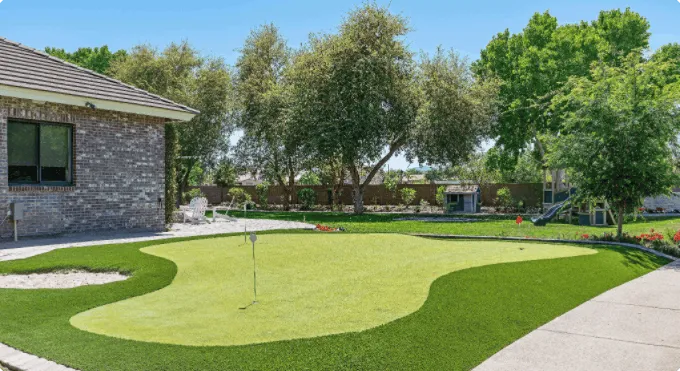
- Afrikaans
- Arabic
- Belarusian
- Bengali
- Czech
- Danish
- Dutch
- English
- Esperanto
- Estonian
- Finnish
- French
- German
- Greek
- Hindi
- Hungarian
- Icelandic
- Indonesian
- irish
- Italian
- Japanese
- kazakh
- Rwandese
- Korean
- Kyrgyz
- Lao
- Latin
- Latvian
- Malay
- Mongolian
- Myanmar
- Norwegian
- Persian
- Polish
- Portuguese
- Romanian
- Russian
- Serbian
- Spanish
- Swedish
- Tagalog
- Tajik
- Thai
- Turkish
- Turkmen
- Ukrainian
- Urdu
- Uighur
- Uzbek
- Vietnamese
Factors Influencing the Cost of Constructing a Turf Football Field
Dec . 13, 2024 00:40 Back to list
The Cost to Build a Turf Football Field An In-Depth Analysis
Building a turf football field is a significant investment for schools, municipalities, and sports organizations. The appeal of artificial turf lies in its durability, low maintenance requirements, and the aesthetic value it adds to a sports facility. However, there are many factors to consider when estimating the cost of constructing a turf football field. This article delves into the key components that contribute to the overall expenses involved, helping stakeholders make informed decisions.
Initial Costs
The initial cost of a turf football field can range from $500,000 to $1.5 million, depending on various factors such as location, field dimensions, and surface materials. The average size for a regulation football field is approximately 100 yards long and 53.3 yards wide, which can affect the total square footage covered by the turf. The type of turf chosen—whether it is a basic low-quality product or a premium, high-performance surface—will also play a significant role in the total expenditure.
Site Preparation
Before laying the turf, proper site preparation is essential. This may include surveying the land, grading, and adding drainage systems to ensure proper water runoff. Site preparation can vary widely in cost based on the existing condition of the land and geographic considerations. Typically, these costs can range from $30,000 to $100,000. Proper preparation is crucial, as inadequate drainage or leveling can lead to costly repairs later.
Turf Material Selection
Selecting the appropriate turf material affects both the cost and the field's longevity. Turf options might include polyethylene, nylon, or a blend of materials. Each comes with its own price range, with polyethylene being generally more affordable but less durable than nylon. Additionally, certain turf products come with infill options, which can also influence the expense. For example, rubber infill tends to be pricier, but it offers better cushioning and injury prevention compared to sand.
Installation Costs
The installation phase can be labor-intensive. Costs for professional installation typically add another $200,000 to $400,000 to the overall budget. This cost includes laying the turf, securing it to the field, and ensuring that all seams are correctly fused to prevent premature wear. It is vital to hire experienced contractors who specialize in turf installation to ensure that the field meets safety standards and performs well throughout its lifespan.
cost to build a turf football field

Additional Expenses
In addition to the major costs outlined above, there are several additional expenses to consider
1. Fencing and Bleachers Installing fencing around the field and adding spectator seating can increase costs significantly. A simple chain-link fence may cost around $10,000, while more elaborate fencing can exceed $50,000. Bleacher systems can range from $20,000 to $100,000 based on capacity and materials.
2. Lighting If night games are a consideration, the installation of lighting systems will be necessary. Costs for a quality lighting system can vary from $50,000 to $150,000, depending on the field layout and the quality of the fixtures.
3. Maintenance Equipment Although turf requires less maintenance than natural grass, some upkeep is essential. Investing in specialized equipment for cleaning and maintaining the turf can add another $5,000 to $15,000 to the budget.
4. Insurance and Safety Certifications Ensuring the field meets local safety standards and obtaining proper insurance can involve additional costs that need to be factored into the budget.
Long-Term Costs and Benefits
While the initial investment in a turf football field can be substantial, it is essential to consider the long-term savings. Artificial turf fields require significantly less maintenance than natural grass, resulting in lower upkeep costs over time. Furthermore, the ability to use the field year-round, regardless of weather conditions, maximizes its utility and enhances community engagement in sports activities.
Conclusion
The cost to build a turf football field is multifaceted and influenced by various factors, including site preparation, turf material, installation, and additional amenities. For organizations considering this investment, understanding the full scope of expenses and planning for both immediate and long-term costs will help ensure a successful project. By weighing these considerations carefully, stakeholders can create a vibrant, functional space for athletes and the community alike.
-
The Benefits of Artificial Turf for Indoors
NewsJul.15,2025
-
How Artificial Grass Suppliers Ensure Quality Products
NewsJul.15,2025
-
Artificial Grass and Pets: A Space for Relaxation
NewsJul.08,2025
-
Balcony & Outdoor Decoration with Artificial Grass
NewsJul.08,2025
-
Best Indoor Artificial Grass for Home
NewsJul.07,2025
-
Best Pet Turf for Dogs: Safe & Durable Artificial Grass Options
NewsJul.07,2025
Products categories









